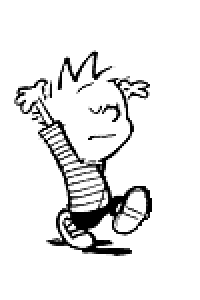by PS | Feb 16, 2009 | Musings
Life goes in phases. When you interact with someone going through a particular phase, remember what it was like when you were going through the same. Wish all attendings/residents did that when supervising interns. Same goes for senior management throwing tasks at rank and file employees.
by PS | Jun 8, 2007 | Musings
There are some examples of last-mile networks that are becoming clearer to me. Consider:
- Telecom: Verizon, ATT or some major company owns the ‘last mile’ of actual physical network that runs from the street into your living room. So irrespective of who provides the actual service in the central routing point, these last-mile owners rake in part of revenue generated.
- Cable: Same with Comcast or Cox. They own the physical last few yards of cable that brings the entertainment to your TV.
- Local healthcare providers (general practitioners, family physicians) can be seen as the last-mile network that big IDNs (Integrated Delivery Networks) and hospitals miss. The big players are always in need to bring in the last-mile players into their network.
Now lets see how new generation companies are changing the rules of game by obviating the need for ownership of ‘last-mile’ networks.
- Vonage and VoIP companies disrupt standard telecom-providers by circumventing the need for specific telephone wiring to the home.
- Dish and DirectTV work around cable providers with satellite communication. So does Joost, in terms of content distribution.
- Telemedicine and remote monitoring technologies make it possible to take care of chronic diseases without actually visiting your big hospital ER.
I’m not sure what exactly, but there is a pattern here. Something around the impending value-depreciation of last-mile networks. Stay tuned while I sharpen my mental axe to trim this overgrowth..
by PS | Feb 5, 2007 | Musings
Today as I was listening to yet another story of corporate maneuvers, I had an epiphany.
If you don’t know about march hares, look it up on wikipedia or on pubmed. During my random TV surfing, I once landed on a Discovery Channel documentary about weird animal behavior. They showed the wild, back-and-forth, almost violent ‘dance’ of hares that gave rise to the phrase “Mad as a march hare”.
The connection to business world here is by analogy. Big corporations do something similar the mad hare dance when they are in trouble.. jump here and there, create a turbulent, distracting scene that takes attention away from the real problem.
Countless number of times I’ve seen mega-projects fail or customers voiding contracts because of valid reasons on their part. But instead of resolving the core problem or admitting their fault , the default reaction of a corporation is the mad hare dance. Almost instantly, a senior VP is thrown in front of the customer. The guy/gal acts as a sandbag for initial outburst, and soon enough gets transferred/resigns. The new person coming in starts by promising stuff and subtly hinting that since he/she is new, it’ll take sometime to catch up. Once the high-level shuffle is done, it starts in a more implicit way at lower levels. And so on..
It never ceases to amaze me how big corporations stay big inspite of the exponentially increasing chaos, inefficiency and dumbness with size. As a enormous headless entity, it’s almost all muscles and skin, but no brain or heart. Or conscience.
by PS | Jan 26, 2007 | Musings
I work for a well-diversified multinational company that has been around for ages. Recently at a business dinner, the casual talk about company performance morphed into multiple rounds of pessimistic discussion about excess process, unrealistic policies, slow market response, and a plateaued stock price. At the tail end of it, a distinguished colleague commented “…but our company has been around for years, and is a de facto leader in many areas; so we must be doing something right to be surviving all along”.
I offered a biological analogy for the apparent success of big corporations inspite of obvious internal chaos and inefficiencies. I called it my ‘Unicellular Organism Theory’ of business, (hope the name catches on someday 🙂 ).
A unicellular organism (amoeba, for example) has only a couple of aims in life- eat and survive. Likewise, big corporations (fortune top 10, for example) are in a blind race for growth and (implicitly) survival. An amoeba will make progress (move) in a direction by extending a shapeless mass of cytoplasm, and if it gets a pin prick in that process; the shapeless arm quickly retracts and another one projects out in a different direction. In a similar way, big organizations with their inherent chaos make apparent ‘progress’ in a given domain/market in a giant, often shapeless move. But as soon as they get a stimulus painful enough, the ‘progress’ improvises and starts in a different direction. But the overall game remains the same- eat and survive.
So what is the tieback to my colleague’s question? Simple. It’s not ‘we must be doing something right to survive all along’, it’s more like ‘we can’t do anything wrong enough to die’. My theory is that corporations have a dominance threshold- after reaching a level of market dominance, they simply can’t make a mistake big enough to perish. If a major project goes sour, you throw some executives at it, get the press to take a positive spin on your failure and move on in another direction. The enormous size ensures that there is always a positive balance, no matter how serious the insult/injury. Just like the unicellular organism- it consumes food much smaller than itself, and works around any painful stimuli it encounters…eating and surviving forever.

Recent Comments